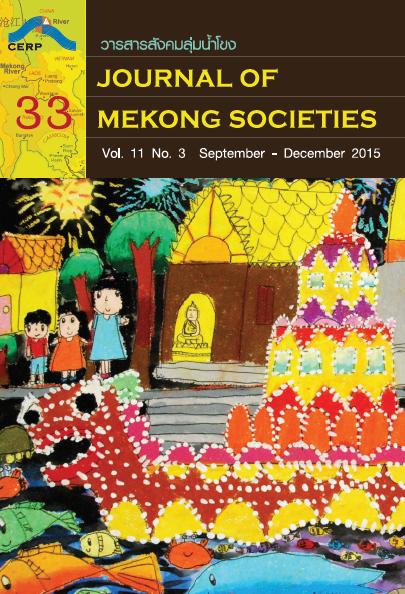The Concept of the Nāga in Cambodian Society
Main Article Content
Abstract
In Cambodian culture, fundamental beliefs in the Nāga stem from several sources: 1) ancient indigenous beliefs, 2) Hindu beliefs, and 3) Buddhism. All three belief systems have blended, forming the Khmer people’s current beliefs about the Nāga. Traditionally, Khmer people regarded the Nāga as their ancestors. When Brahmanism flourished during the Angkor period it had a considerable influence on these ideas and the Nāga became very important. Interestingly, this importance of the Nāga is not found in the Brahmanism of India. Once Brahmanism in Cambodia deteriorated, Khmer people formed a new body of knowledge to explain the role of the Nāga in Hindu mythology. After the Angkor period, Theravada Buddhism prospered and ideas about the Nāga became inextricably intertwined with Buddhism. The Nāga has been used as a symbol in numerous facets of Cambodian society. For instance, it can be a symbol of Cambodian ancestors and reproduction. In the Khmer wedding ceremony, the groom has to hold the hem of the bride’s shawl. This symbolizes an event in the legend when Phra Thong holds the hem of Nang Nāga’s shawl while they are going down to the world of the Nāga. The Nāga has also been portrayed as someone born with good fortune and privilege. The Nāga is also depicted as a protector of Buddhism as can be seen in the use of flags with the Nāga in Buddhist ceremonies and rituals. Moreover, the Nāga is used as a symbol of fertility and a bridge connecting the earth and heaven. Consequently, the Nāga has been portrayed in painting, sculpture, architecture, and traditions and has also been used by many companies and government departments.


